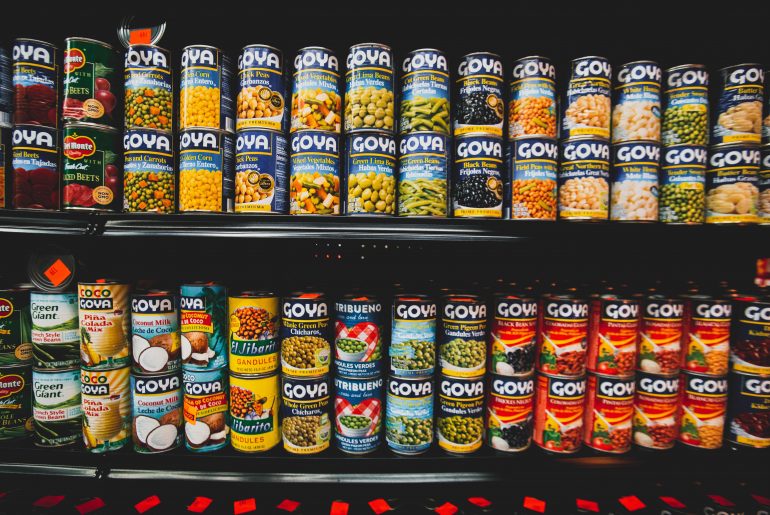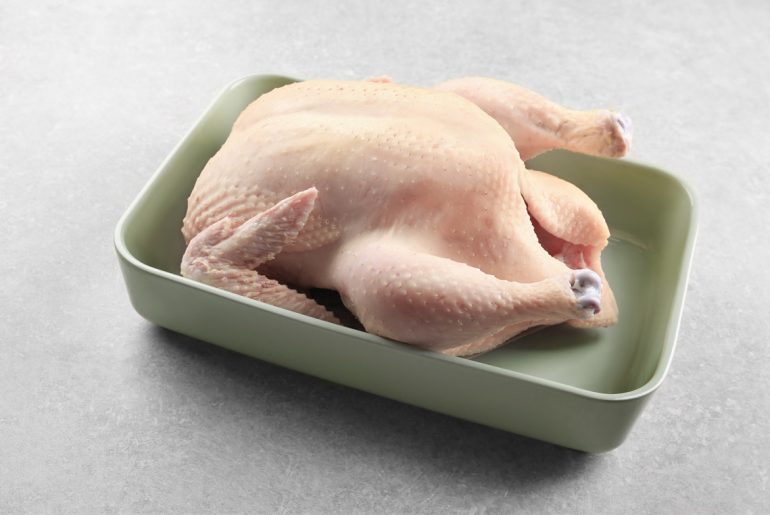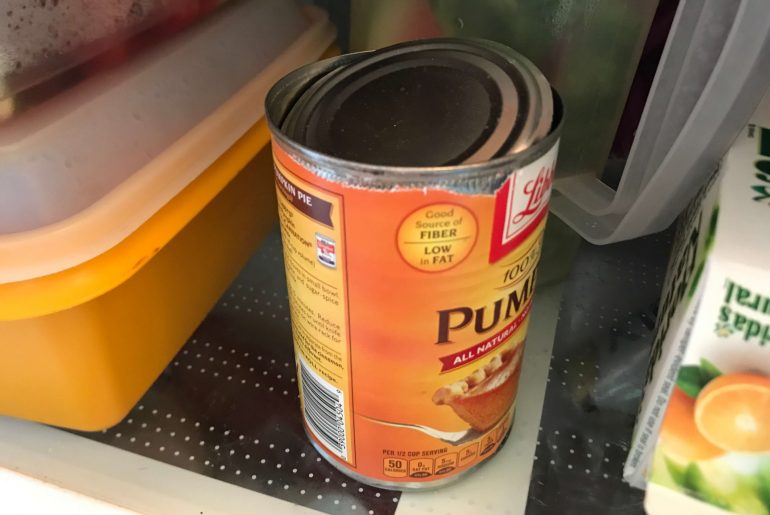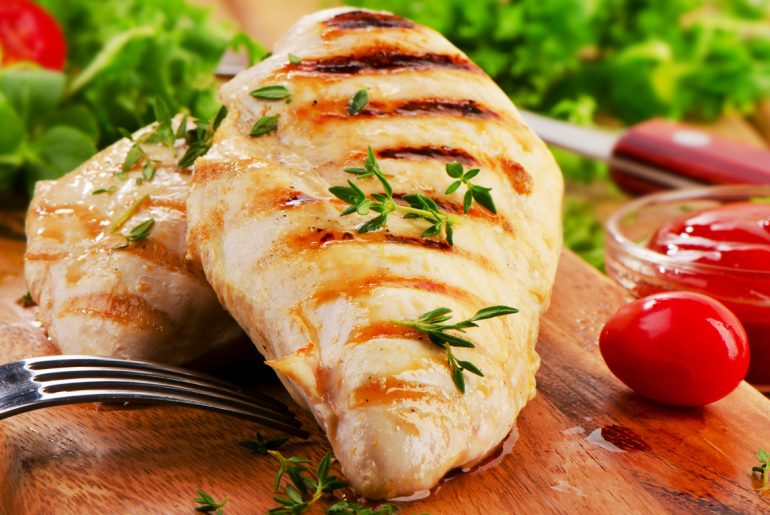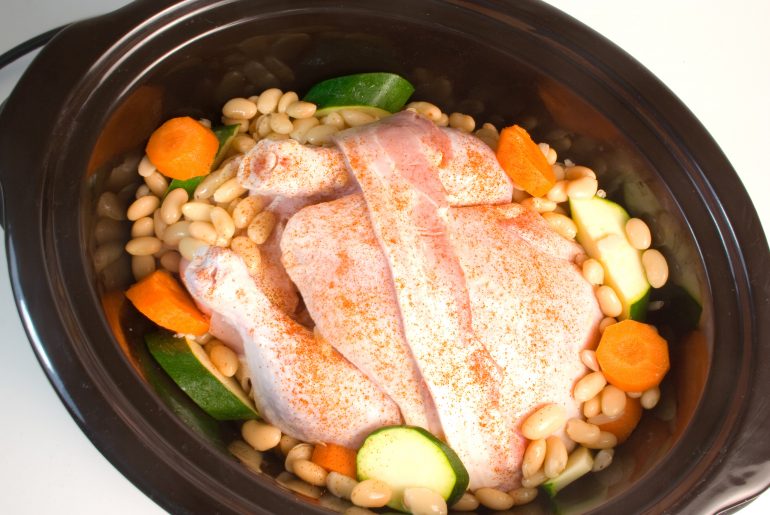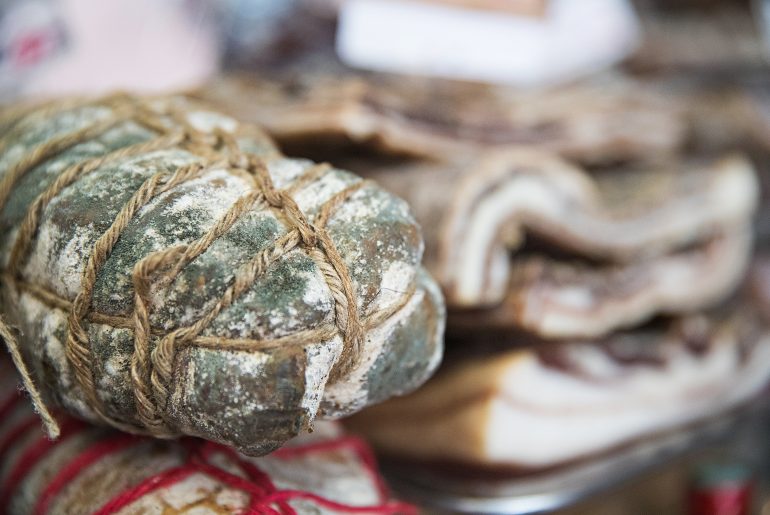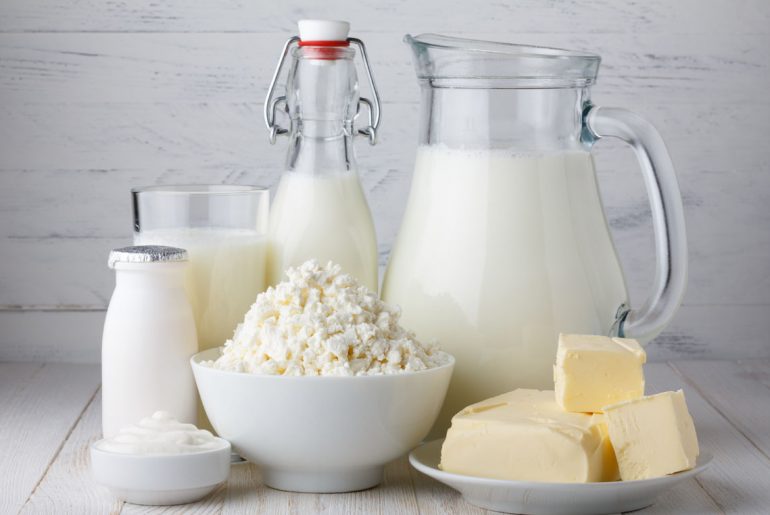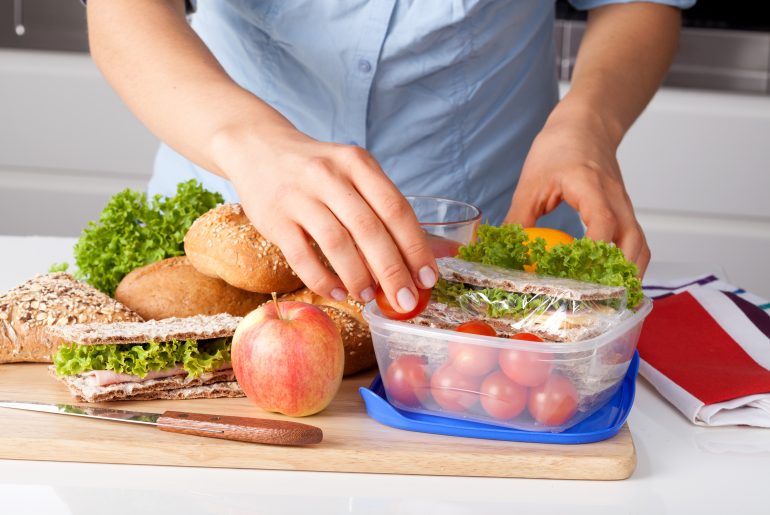Stockpiling food and water is like a little insurance policy: Hopefully you never have to rely on it, but if you do, if could prove to be priceless. Whether it’s the threat of natural disaster or the fear of a pandemic, having a safety stash of food and water can give you a little piece of mind. However, if you’re planning to store your stockpile in the garage, you may want to reconsider. While it may be a neatly out-of-the-way option, the garage isn’t necessarily the best place to store your excess canned goods. The USDA recommends storing canned goods in a cool, dry location—and most garages fail on both accounts. Also see, Moldy Foods that are Still Safe to Eat. Damp garages can cause cans to rust rather quickly. Rusted cans can have tiny holes that will allow bacteria to enter. (If the rust is light enough that you can…
Should you wash a turkey before cooking it?
You MUST resist. Yes, poultry doesn’t exactly seem super clean, but no matter how gross or how slimy that bird feels, whatever you do, do not wash your turkey. More than 46 million turkeys will be eaten this Thanksgiving Day, and with that comes one of the biggest days of the year for food borne illnesses. With so many different foods being stored, rinsed, prepared, and cooked all in the same space, it’s easy to imaging how cross contamination can happen. But the easiest way to spread illness-causing bacteria? Washing the turkey. But why? According to the USDA, rinsing your turkey, whether fresh or frozen, will not get rid of that unwanted bacteria on your bird — in fact, that’s pretty much impossible to do without the high heat of the oven (more on that later). Actually it’s washing your turkey that increases the chance of spreading that bacteria. This…
Can you store open tin cans in the fridge?
I’m willing to admit my dark kitchen secret because I know you’ve done it too. I, on occasion, leave food in its open tin can and pop it back in the fridge. Not proud of it. It happened just last week. I was done baking for the day and found myself with half a can of pumpkin puree left over. I was already mentally done for the day, and in childlike resistance, I just didn’t really feel like transferring the gloopy pumpkin substance into plastic. “It’s in a container already!” I reasoned. But I had heard that storing food in open tins cans is never good, so I set out to investigate exactly why. After scouring the internet for far longer than it would have taken me to just put my leftover pumpkin in plasticware and get on with my life, I found an official vote of confidence for my occasional…
More people get sick from this food than any other, according to the CDC
Summer is right around the corner and chances are you’re dying to bite into your first big piece of juicy grilled chicken. Chicken is by far the most popular source of protein in the U.S. The USDA reports that Americans consume 92 pounds of chicken per person per year. But all of that poultry comes with a dirty little secret — chicken is far more likely to make you sick than any other food. The CDC estimates that every year about a million people get sick from eating contaminated poultry. Salmonella and campylobacter are the two most common causes of foodborne illness — both commonly spread through animal feces. Salmonella can come from a variety of foods including eggs, meat, dairy, or produce, but campylobacter is pretty strictly tied to chicken. The USDA reported that from April 2018 through March 2019, 22% of production plants did not meet standards set for limiting…
You should never cook frozen chicken in a crock pot, USDA says
Crock-pots are all about convenience. You throw in some ingredients, go about your business, and whip out a delicious, hot meal a few hours later. No one takes the time to prep ingredients a whole day before for a crock-pot. That’s why it was so disconcerting to learn that taking chicken directly from the freezer and plopping it in the popular countertop appliance is a big no-no. According to the United States Department of Agriculture’s (USDA) website, slow cookers, as a whole, are safe. But in a section called “Slow Cookers and Food Safety,” the department elaborates and says that you should, “Always thaw meat or poultry before putting it in a slow cooker.” Unfortunately, microwaving it last minute isn’t even an option! Man, these guys are tough. The reasons are based on bacteria. The USDA explains that because your slow cooker is, well, slow to reach any cooking temperature…
Moldy foods that are still safe to eat, according to the USDA
Americans waste more than $160 billion in food every year — yikes! Of course, no one buys food with the anticipation of throwing it in the trash, but once something gets moldy, we have little choice. This might be true of most foods — but not all. According to the USDA, some foods can still be consumed even when mold is visibly present. This handy guide can help you decide if you’re still unsure. Here are 3 foods that don’t need to wind up wasted just because of a little mold: Moldy foods you can still eat 1. Hard salami and dry-cured country hams The USDA says that it’s normal for these products to have a layer of surface mold. Think about the white coating around certain salamis — this is actually a benign mold that helps cure the meat and prevent harmful bacteria from growing. Just remove the surface,…
Is it safe to tear off the mold and eat the rest of the bread?
Bread. It’s one of those foods that you always like to have at your house, yet it gets moldy so quickly. When you see a loaf start to go bad you just rip off the green stuff and use the rest. All is good, right? Wrong. Unfortunately, that one little circle of moldy bread does ruin the whole loaf. In fact, the United States Department of Agriculture recommends that you toss bread at the first sign of mold. It seems excessive, but it’s true. Studies have shown that mold has long, threadlike roots that can penetrate deep into the entirety of nearly any food it grows on. And mold is nothing to take lightly. The microscopic fungi can cause a wide range of health problems including allergic reactions, breathing problems, stomach problems, and some molds — those that produce the substances known as aflatoxins — can even cause liver cancer.…
Is plastic better than wood?: The cutting board debate
Whether you cook three times a day or three times a year, you probably own a cutting board. It’s a kitchen staple with one simple job, but without it, you wouldn’t have anywhere to cut, chop, dice, or slice your meats, apples, and onions. While you may know you need a cutting board, do you know when you should choose a wooden board over a plastic one, or vice versa? After all, anything your food touches can be a source of contamination and foodborne illness, so kitchen tools and care are no small decision. As it turns out, there are some major differences between boards you should know before you head to the store. Wood versus plastic For most of history, chopping blocks then cutting boards were all made of wood. But the invention of modern plastics in 1907 meant that plastic utensils slowly began making its way into people’s…
Whole milk might be healthier than skim milk, study shows
For years, experts have been telling us that full-fat dairy products like whole milk are loaded with scary saturated fats and the low-fat dairy options like skim milk are better for us. But recent research suggests that full-fat dairy may actually be healthier than and more beneficial than previously thought. The new research, published in The Lancet, found that people who eat full-fat dairy aren’t any more likely to develop heart disease or type 2 diabetes than those who opted for the low-fat versions. In fact, they might even be less likely to pack on the pounds. The observational study compiled data from about 136,000 adults across 21 countries on five continues. None of the participants had a history of heart disease, and they all completed detailed surveys, answering questions about type and frequency of dairy intake. The study found that dairy consumptions — no matter what kind — was…
Back-to-school food safety for parents, kids
Chances are you’ll worry more about finding foods for your child’s lunchbox that they’ll actually eat, than you will about whether those foods will be safe to eat by the time they get there. More than 48 million Americans will become stricken with food poisoning this year. That’s nearly 1 in every six people resulting in 128,000 hospitalizations and more than 3000 deaths. Children are the most vulnerable to foodborne illnesses, so it’s worth taking extra precautions when packing their lunches. “One thing parents might want to do before school starts is pack a simple lunch with a cold source, and leave it on the counter,” said Marianne H. Gravely, Senior Technical Information Specialist of the Food Safety Education Staff at the USDA. “Wait the amount of time the child has to wait until lunch, and see if it’s still cold.” This activity gets the kids involved in their lunch planning but it also starts to teach them to become aware of the…

